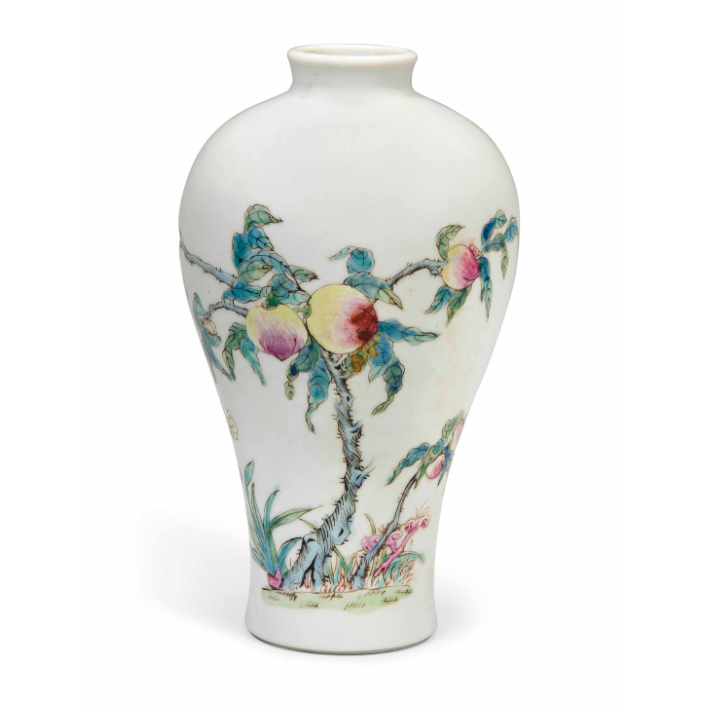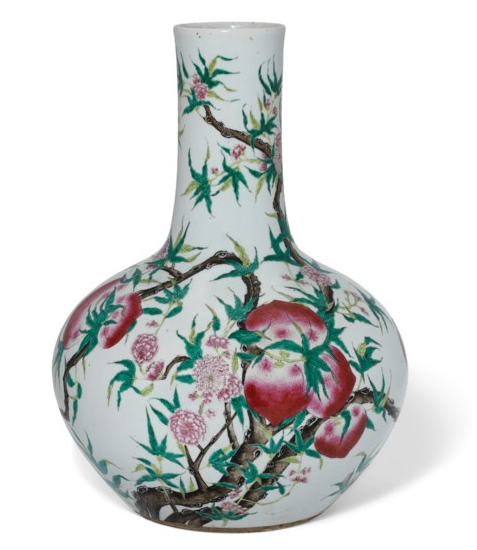Chinese Porcelain Decorative Patterns - Peach
In Chinese culture, the peach—its fruit, its pit, and the wood of the tree—is associated with springtime, fertility, and especially long life. The peach is a symbol of long life. Peach blossoms are symbols of spring and happiness.

Much like the golden apples of the Hesperides in Greek mythology, peaches in China are considered the fruits of immortality. According to tradition, these immortal peaches (xiantao 仙桃) is grown in the garden of the goddess Queen Mother of the West in China’s fabled Kunlun Mountains, ripen only once every few thousand years, conferring eternal life on all who eat them. The white-bearded God of Longevity is usually pictured holding or emerging from a “fairy fruit” (xianguo 仙果)—a peach. Today sweet longevity buns in the shape and color of peaches are typically served at the birthdays of elderly people to celebrate long life and are presented in temples as ritual offerings during the birthdays of deities.

On a more mundane level, peaches are symbolic of spring and the New Year, thus carrying connotations of fertility. The time when peaches are blossoming on the trees is considered an auspicious time to get married. At the most basic level, peaches are common symbol of luck and good fortune in China. The design of the famous ideogram known as “Shou” or “Chou” is based on a peach pit and appears on many objects associated with Chinese culture (for full details, see the symbol for ‘Shou’).


